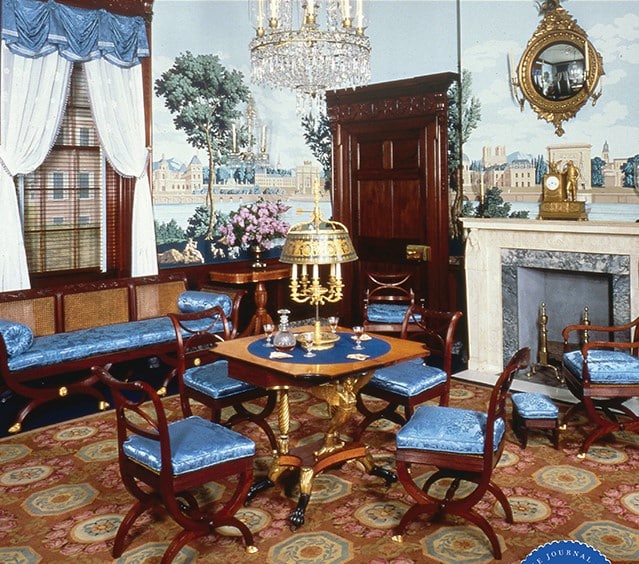No room in the American home in the nineteenth century was more tenderly cared for, fussed over, or jealously protected than the parlor, especially during the Victorian era. It was a central part of social family life in middle and upper-class households; a room where guests were formally received, afternoon tea was held with friends, condolence calls were paid, intimate conversations of a personal nature took place, and where family and guests socially gathered before dinner parties. As such, its design aesthetic, furnishings, and the objects on display were a personal reflection of the family, and in particular, the lady of the house.
To keep up with the popular styles, magazines such as Godey’s Lady Book and Harper’s Bazaar published the latest trends and what was desirable and what was not. It was up to the lady of the house to meet those expectations. “To the lady of the house, the parlor was, or supposed to be the expression of her refinement and the stage on which she displayed her breading, her bibelots, her poise and her culture.” according to an academic study on “The Parlor” published in 1963.
Fashions in the decoration of the parlor changed considerably as the century progressed. As a result, a lot of money and thought went into its furnishings. During the Greek Revival era, the parlor was decorated with the formal, classic furnishings so warmly recommended by Andrew Jackson Downing, whose word on taste in the 1840’s was law. During the second half of the century, the parlor underwent a design transformation, going from furnishing that was austere and formal to a Victorian-era aesthetic characterized by ornate carvings, dark woods, and heavy luxurious fabrics.
By the mid-19th century, a seven-piece match set was essential in the parlor; an armchair for the Head of the House, a lady’s chair for the Lady of the House, a sofa, and four parlor chairs. The cost of furnishing and updating a parlor to stay current and fashionable was enough to take a husband’s breath away!
In addition to its furnishing, the parlor also displayed items that showcased the family’s personal life. Treasures brought back from travels, precious family heirlooms, presents from lost friends, mementos of anniversaries, the Family Bible, paintings and photographs of family members… all found their way into the parlor. It was a sanctuary of family memories and moments and a testament to civilized living meant to convey the family’s ‘gentility’ to others. As a result, proper behavior, dress, and etiquette were heavily enforced in the room, when with company, and in private, gathered together as a family.
Despite its century-long reign and dominance over the American home and the household budget, the parlor as a sacred space was replaced by other rooms more in keeping with the needs of a modern family and lifestyle as we entered the 20th century. For one thing, more and more people were living in cities, and a smaller and smaller percentage of city families were living in houses. For families moving into newly-built homes in the suburbs, house layouts put the emphasis on a central family living space and larger kitchen in favor of closed off rooms. Families no longer wanted or had room for formal, dedicated spaces. Even the word “parlor” had become an antiquated word reflective of another time. Instead, they wanted a sitting room for everyday family living; its furniture more comfortable, its atmosphere more relaxed.
“We are fast becoming a parlorless nation,” wrote Lillian Hart Tryon in the early 1900s. “The accidental limitations of space and of service in modern life, and the increased expenses of buildings, as well as the noble intention of simplifying the house, have contributed to the result.”





Related posts: